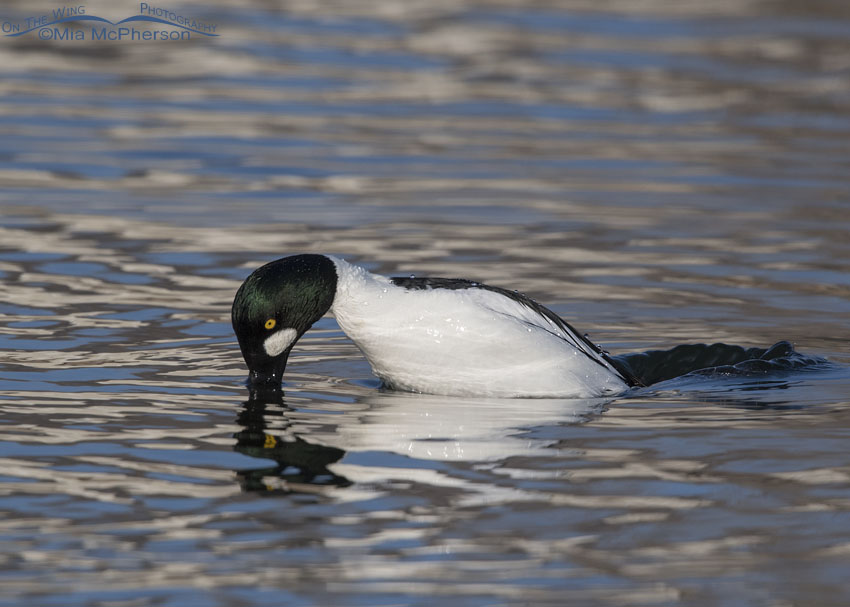 Common Goldeneye male diving – Nikon D500, f7.1, 1/2500, ISO 500, -0.3 EV, Nikkor 500mm VR with 1.4x TC, natural light
Common Goldeneye male diving – Nikon D500, f7.1, 1/2500, ISO 500, -0.3 EV, Nikkor 500mm VR with 1.4x TC, natural light
After spending many hours traveling in the West Desert in search of birds yesterday my best birds of the day were photographed just a few blocks from home in the late afternoon. The numbers of Common Goldeneyes had increased again slightly on my local pond and I could even see a few more females mixed in with the adult and first winter males. Most of the Common Goldeneyes stayed on the other side of the pond but a few came in closer and I focused on them. I enjoy photographing these diving ducks as they are about to dive and relish capturing them with just the tips of their bills in the water as they plunge their heads in first.
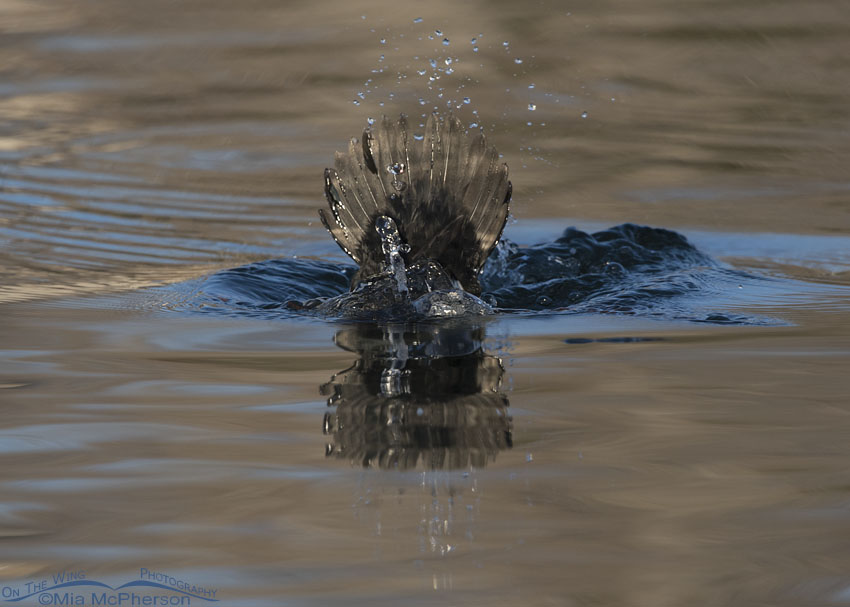 Duck Tail – Common Goldeneye – Nikon D500, f7.1, 1/1000, ISO 500, -0.3 EV, Nikkor 500mm VR with 1.4x TC, natural light
Duck Tail – Common Goldeneye – Nikon D500, f7.1, 1/1000, ISO 500, -0.3 EV, Nikkor 500mm VR with 1.4x TC, natural light
Yesterday I photographed quite a few of their tails before they slipped under the water and I actually enjoyed some of the resulting photos because of the great reflections…
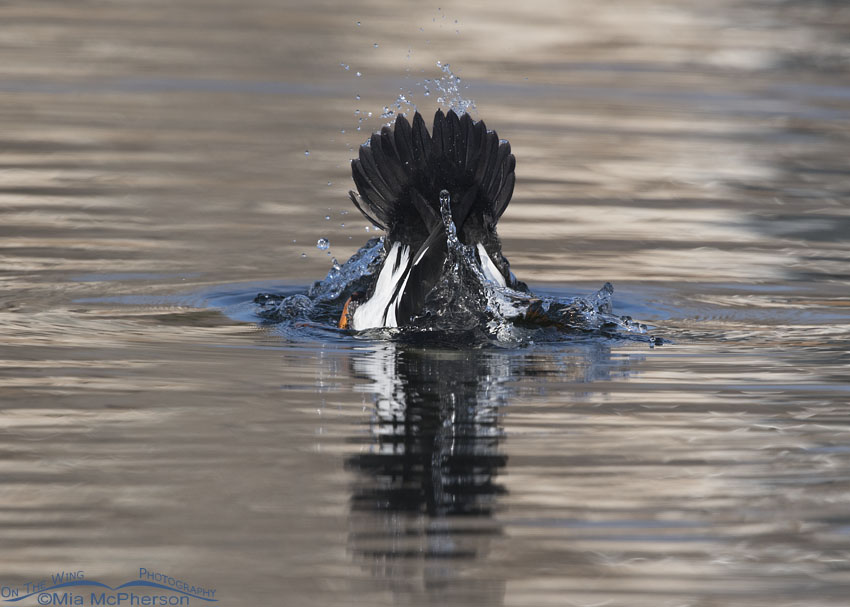 Common Goldeneye drake diving for food – Nikon D500, f7.1, 1/1600, ISO 500, Nikkor 500mm VR with 1.4x TC, natural light
Common Goldeneye drake diving for food – Nikon D500, f7.1, 1/1600, ISO 500, Nikkor 500mm VR with 1.4x TC, natural light
The symmetry of their tails…
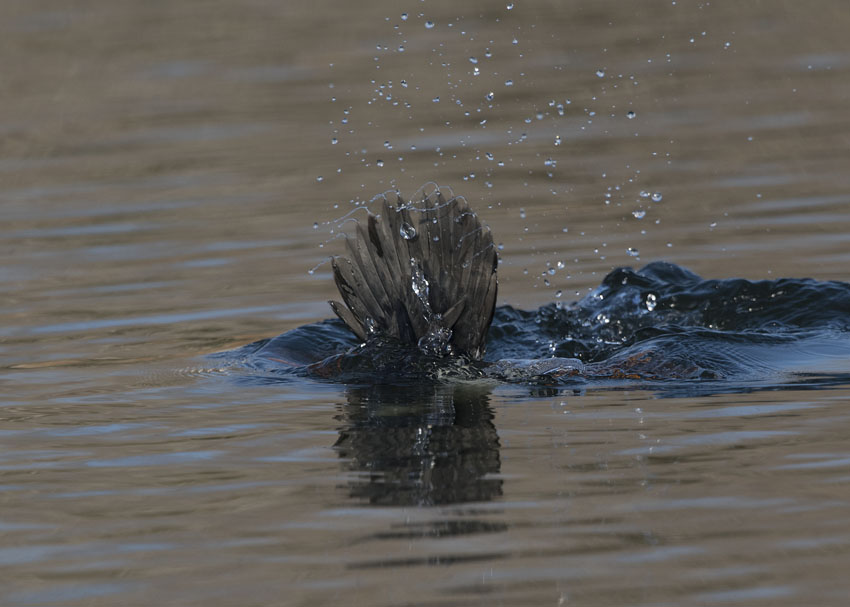 Common Goldeneye tail flinging water – Nikon D500, f7.1, 1/1600, ISO 500, -0.3 EV, Nikkor 500mm VR with 1.4x TC, natural light
Common Goldeneye tail flinging water – Nikon D500, f7.1, 1/1600, ISO 500, -0.3 EV, Nikkor 500mm VR with 1.4x TC, natural light
And how the water droplets were flung off of their tails as they dove down to look for prey. This image in particular delighted me because the water looks like long, blue strings at the tips of almost all of the tail feathers. I’m not sure I have ever seen this watery string-like effect occur before when photographing goldeneyes diving.
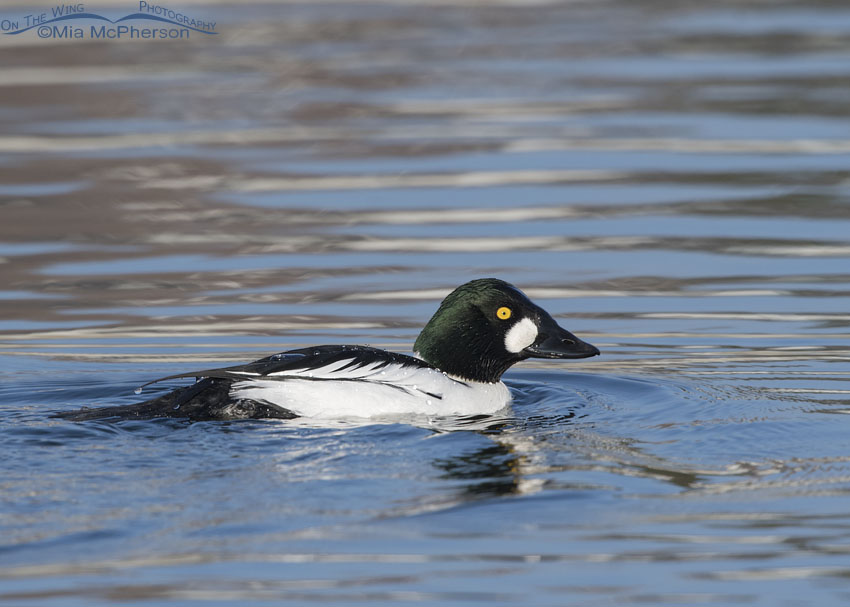 Drake Common Goldeneye after surfacing – Nikon D500, f7.1, 1/1250, ISO 500, -0.3 EV, Nikkor 500mm VR with 1.4x TC, natural light
Drake Common Goldeneye after surfacing – Nikon D500, f7.1, 1/1250, ISO 500, -0.3 EV, Nikkor 500mm VR with 1.4x TC, natural light
I’ve found that it is hard to predict where and when a Common Goldeneye will surface after a dive, sometimes you can see air bubbles coming to the on the surface when they are underwater but usually they surface well ahead of the air bubbles and they can stay under water for quite some time. I hope one day to capture one of the adult males right as it surfaces with a sheet of water still covering his iridescent green head which I’ve done before with a first winter drake at Farmington Bay WMA.
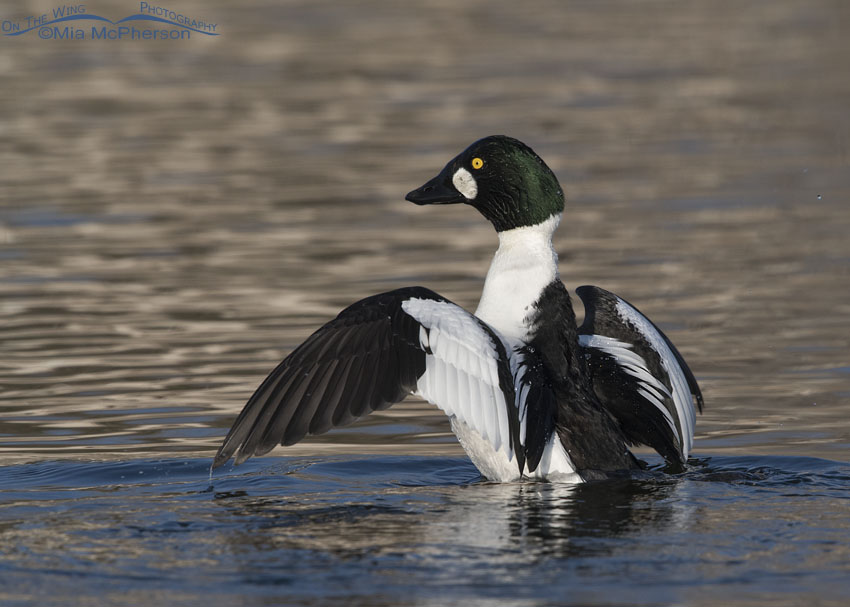 Common Goldeneye male shaking his wings – Nikon D500, f7.1, 1/2500, ISO 500, -0.7 EV, Nikkor 500mm VR with 1.4x TC, natural light
Common Goldeneye male shaking his wings – Nikon D500, f7.1, 1/2500, ISO 500, -0.7 EV, Nikkor 500mm VR with 1.4x TC, natural light
I also felt fortunate to photograph this drake Common Goldeneye as he shook and flapped his wings because it showed the broad white patches on the dorsal side of his wings.
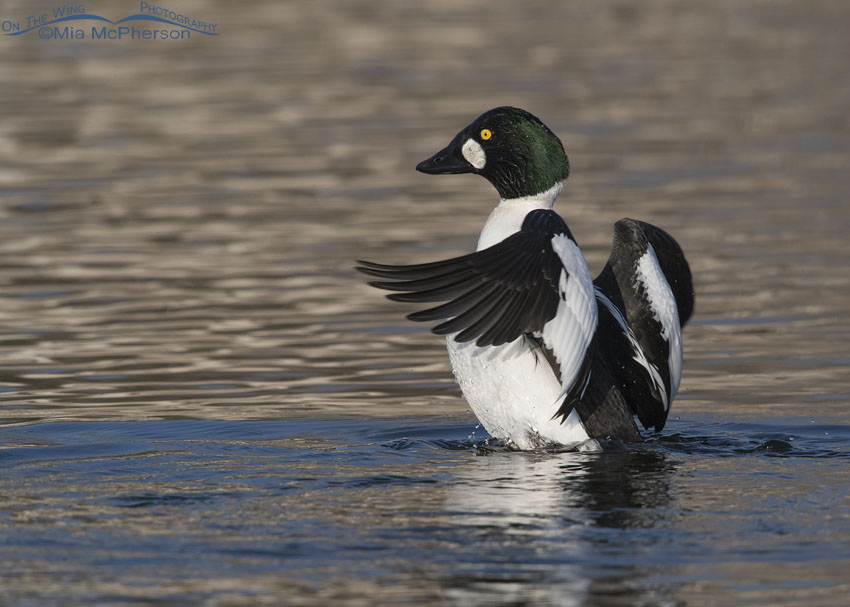 Wing-flapping drake Common Goldeneye – Nikon D500, f7.1, 1/2500, ISO 500, -0.7 EV, Nikkor 500mm VR with 1.4x TC, natural light
Wing-flapping drake Common Goldeneye – Nikon D500, f7.1, 1/2500, ISO 500, -0.7 EV, Nikkor 500mm VR with 1.4x TC, natural light
And how much of his body was out of the water while his wings flapped.
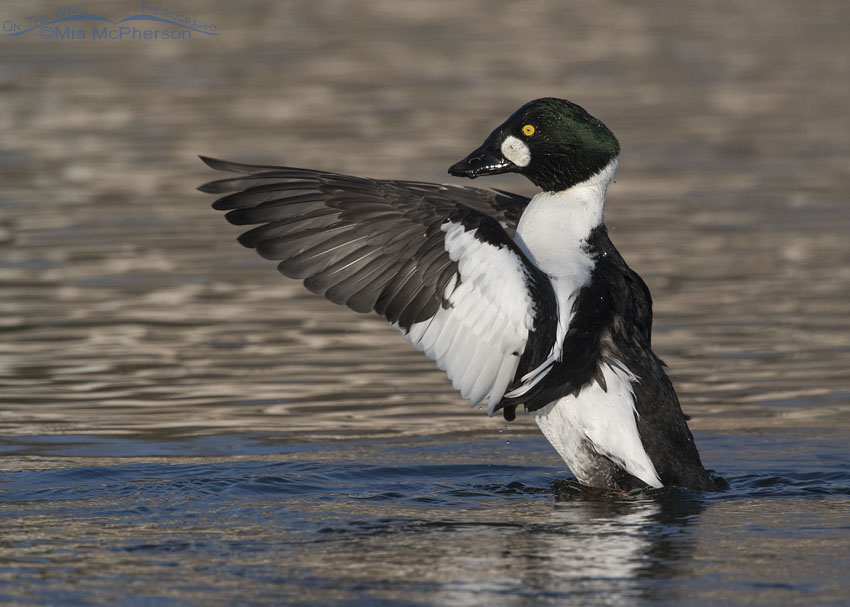 Male Common Goldeneye flapping his wings – Nikon D500, f7.1, 1/2500, ISO 500, -0.7 EV, Nikkor 500mm VR with 1.4x TC, natural light
Male Common Goldeneye flapping his wings – Nikon D500, f7.1, 1/2500, ISO 500, -0.7 EV, Nikkor 500mm VR with 1.4x TC, natural light
I caught the wings extended in front of the bird several times and of those liked this photo the most. What’s not to like about this great pose?
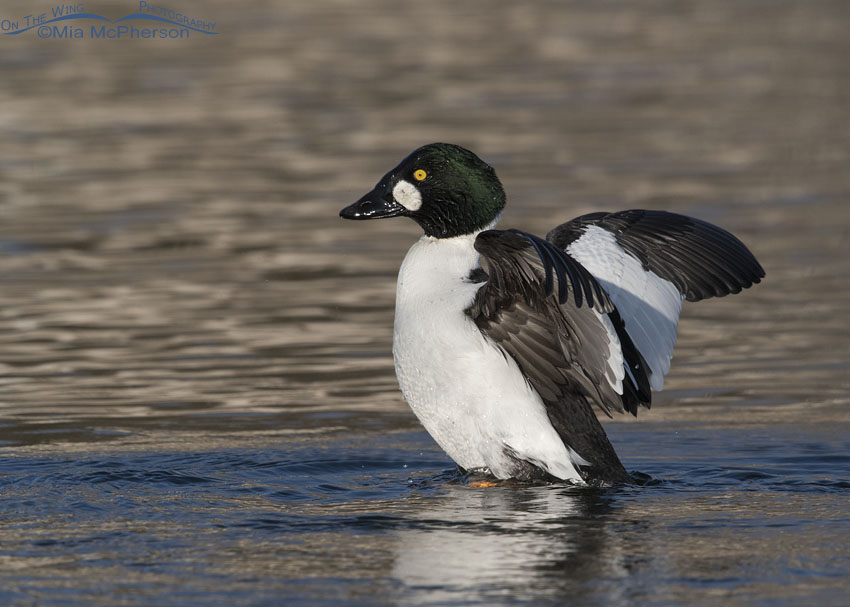 Common Goldeneye male shaking it up – Nikon D500, f7.1, 1/2500, ISO 500, -0.7 EV, Nikkor 500mm VR with 1.4x TC, natural light
Common Goldeneye male shaking it up – Nikon D500, f7.1, 1/2500, ISO 500, -0.7 EV, Nikkor 500mm VR with 1.4x TC, natural light
As the drake was nearing the end of his wing flapping session his wings were not fully extended and were closer to his body and his chest also seemed more rounded and less stretched out.
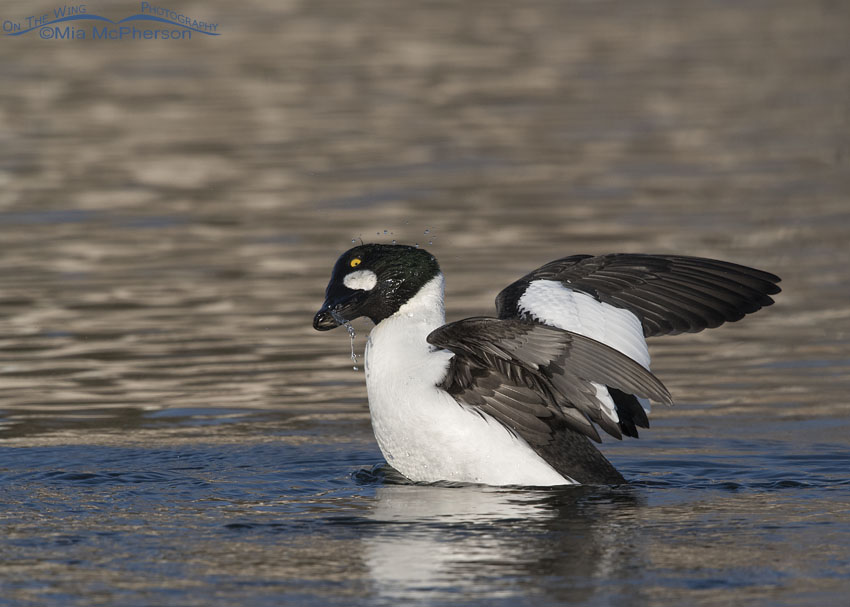 Drake Common Goldeneye shaking water off his head – Nikon D500, f7.1, 1/2500, ISO 500, -0.7 EV, Nikkor 500mm VR with 1.4x TC, natural light
Drake Common Goldeneye shaking water off his head – Nikon D500, f7.1, 1/2500, ISO 500, -0.7 EV, Nikkor 500mm VR with 1.4x TC, natural light
And just before he settled back down on the water he shook his head and water went flying. I really enjoyed watching and photographing this drake’s wing flapping session yesterday afternoon especially since he was close enough to capture plenty of fine details in his plumage and to have enough shutter speed to freeze not only the motion of his wings but the water droplets too.
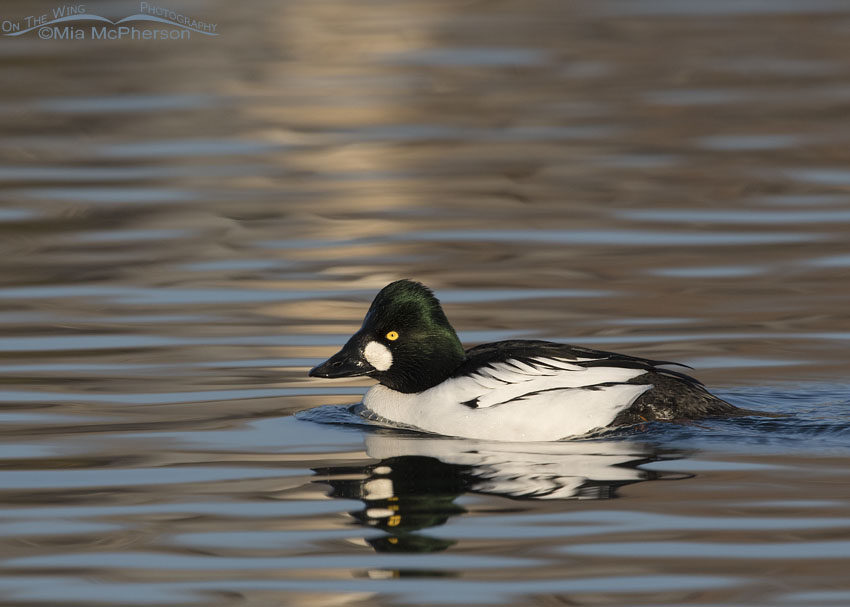 Male Common Goldeneye in a spot of light – Nikon D500, f7.1, 1/1600, ISO 500, -0.3 EV, Nikkor 500mm VR with 1.4x TC, natural light
Male Common Goldeneye in a spot of light – Nikon D500, f7.1, 1/1600, ISO 500, -0.3 EV, Nikkor 500mm VR with 1.4x TC, natural light
I included this photo today because I liked how it seemed that there was a spotlight on the male goldeneye and the water he was swimming on plus I liked the multiple reflections of this bird’s eye.
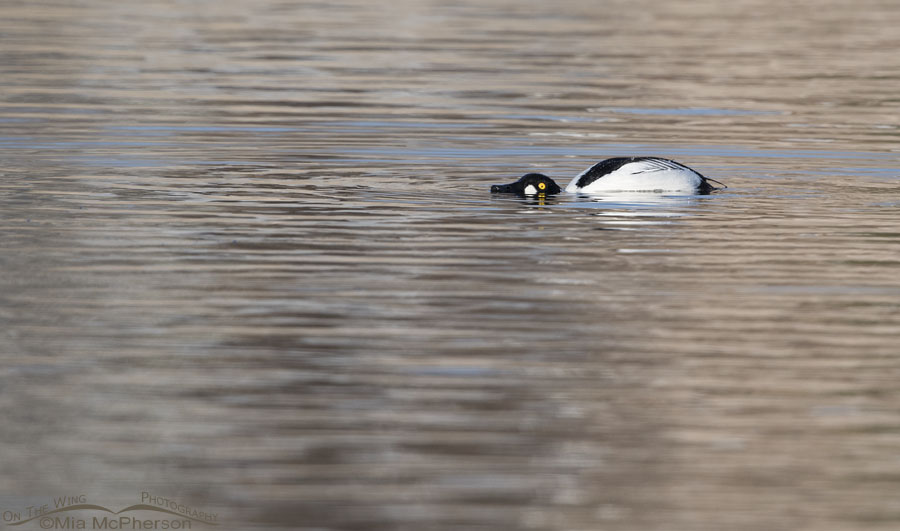 Common Goldeneye Threat Display – Nikon D500, f7.1, 1/1250, ISO 500, Nikkor 500mm VR with 1.4x TC, natural light
Common Goldeneye Threat Display – Nikon D500, f7.1, 1/1250, ISO 500, Nikkor 500mm VR with 1.4x TC, natural light
From quite a distance I noticed this Common Goldeneye drake’s Threat Display behavior and hoped that I would see some interaction between him and another drake…
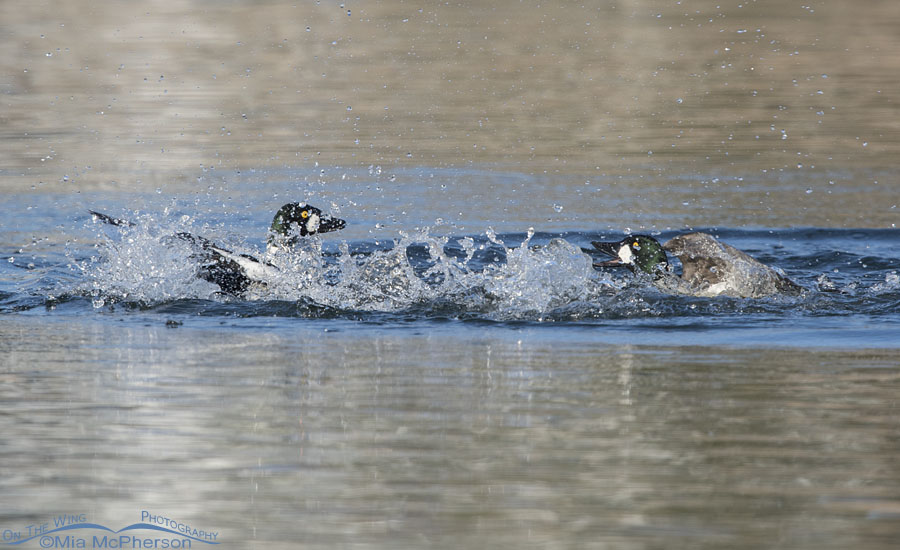 Fighting male Common Goldeneyes – Nikon D500, f7.1, 1/1000, ISO 500, Nikkor 500mm VR with 1.4x TC, natural light
Fighting male Common Goldeneyes – Nikon D500, f7.1, 1/1000, ISO 500, Nikkor 500mm VR with 1.4x TC, natural light
And I did… when he and another drake that was close to him dove under the water at the same time facing towards each other they came to the surface already fighting, stirring up the water and chasing after each other. I only wish that they had been a little bit closer while they were fighting as both of these last two images were cropped more than I like to crop but I wanted to include at least one of the Common Goldeneye fight photos I took yesterday.
I spent fifty-five minutes primarily focusing on male Common Goldeneyes yesterday afternoon and I am very happy with the images I took of these beautiful diving ducks. I’m looking forward to spending more time with them this winter.
Life is good.
Mia
Click here to see more of my Common Goldeneye photos plus facts and information about this species.


Photo 8 could be entitled, “Westward, Ho!” Love these photos of the goldeneyes !
Not only is this a terrific series of shots…but the movement you captured is palpable in every pic. Just incredible. Thanks Mia.
Gorgeous! Absolutely gorgeous!
Magic. Absolutely magic.
Very lovely photos and interesting too.
I don’t know about you but the last 2 days I have been walking around singing “Blue skies nothing but blue skies do I see”.
You SHOULD be “very happy” with these photos! If it were me (and that ain’t happening), I’d be deliriously delighted! What a spectacular series!! Seriously SPECTACULAR!! I just love the water strings and all the rest of these images! Just WOW! What beautiful ducks. And I’m always delighted to see how well feathers work! What a wonderful world we have!
Great series…found the colors and patterns in the water almost as as the birds….I especially liked the butt shots!
What a fantastic series of photos. Thank your for showing so many of them. Fabulous.